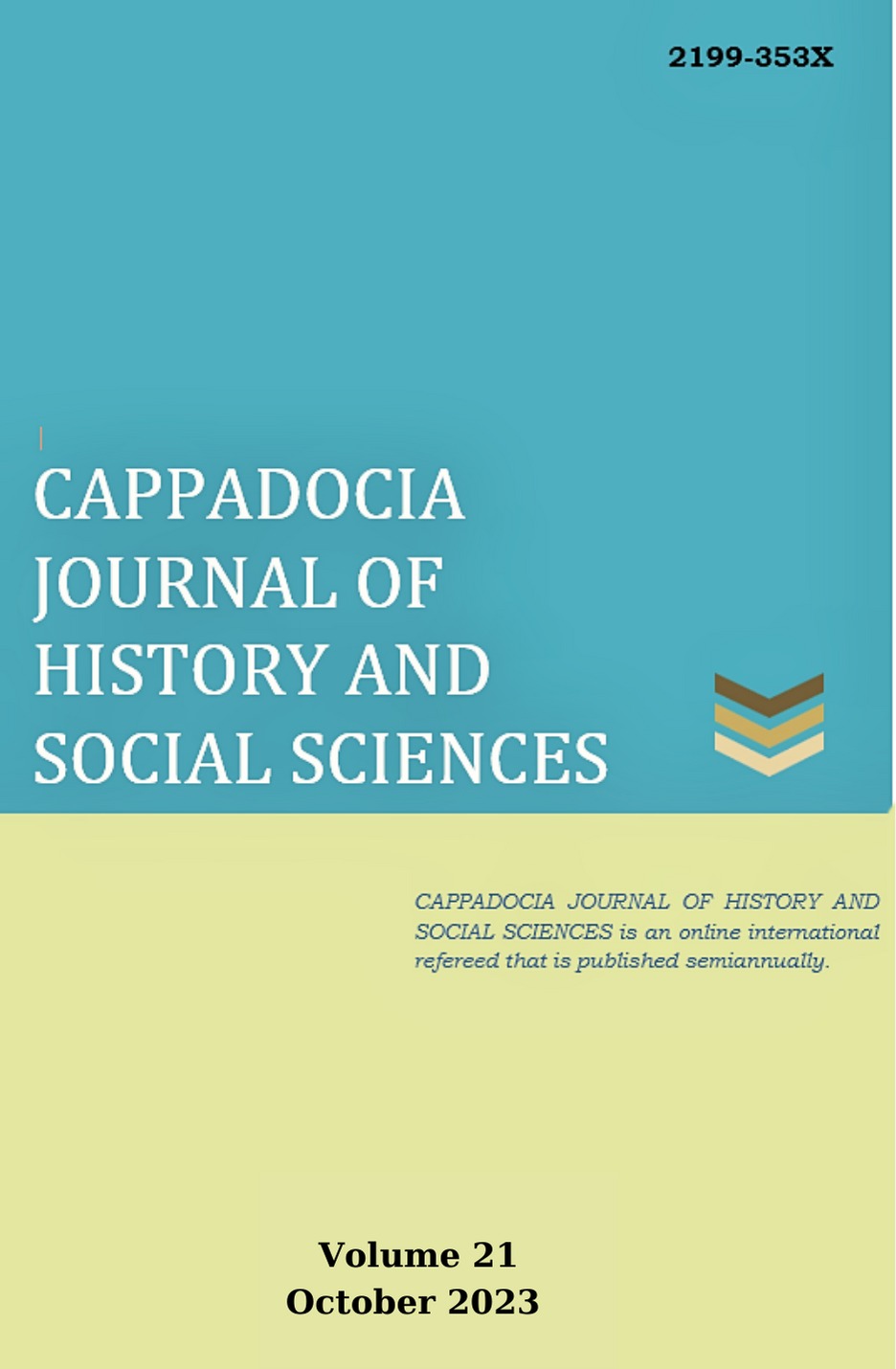Author :
Abstract
Fatımiler döneminde yazılmış ve yakın zamanda keşfedilerek ilim dünyasına sunulan Kitâb-ı Garâibü’l- Fünûn ve Mulahu’l- 'Uyûn adlı eser Fatımiler devrinde dünya coğrafyasına verilen önemi göstermesi açısından önemlidir. Kitaptaki bir takım bilgilerden yaklaşık olarak 1020 ile 1050 tarihleri arasında tutulduğu anlaşılan eserin yazarı tam olarak tespit edilememiştir. Elimizdeki en eski nüsha muhtemelen XIII. yüzyıl başında aslından kopya edilmiştir. Özellikle bu kopyada detaylı, renkli harita ve çizimlerin olması nüshanın değerini arttırmaktadır. Esasında eser iki kısma ayrılmaktadır. İlk kısımda gökyüzü ve yıldızlarla ilgili bir takım kozmografyaya dair bilgiler verilirken ikinci kısımda yeryüzü, iklimler ve dönemin dünya coğrafyası ile ilgili çeşitli bilgiler verilmiştir. Bu bilgilerin yanı sıra on yedi adet harita da kitaba eklenmiştir. İki adet dünya haritası, Hint Okyanusu, Hazar Denizi ve Akdeniz gibi büyük denizlerin; Nil, Fırat, Dicle, Ceyhun ve İndus nehirlerinin ve Akdeniz’deki kimi adaların haritaları bunlardan bazılarıdır. Eser genel olarak ele alındığında Fatımilerin propaganda ve ticaret politikalarıyla paralellik göstermektedir. İpek ve Baharat yolu üzerindeki kimi önemli mevkiler ve güzergâhlar haritalarla çizildiği gibi bu yolların birleştiği Akdeniz’e daha detaylı bir bölüm ayrılmıştır. Burada Akdeniz’deki limanların ve çeşitli adaların detaylı haritaları ve açıklamaları verilmiştir. Eserin kimi bölümlerinde ise Türkistan ve çevresi, bölgedeki Türkler ve Türk boyları, anılan coğrafyada yaşam koşulları, geçim şartları, çeşitli gelenekler ve önemli nehir ve göllerin haritaları verilmiştir. Haritalar üzerine düşülen bir takım notlar ile bölgedeki mevkiler ve bunların kimi özellikleri açıklanmıştır. Bu bilgilerin bir kısmı dönemin diğer coğrafi eserlerinden alınsa da özgün çizimler verilen bilgilerin değerini arttırmaktadır. Bu çalışmada Kitâb-ı Garâibü’l- Fünûn ve Mulahu’l- 'Uyûn’da geçen Türkistan ve etrafındaki bölgelerle ilgili kısımlar değerlendirilerek, bu bölümlerin çevirisi eklenmiştir.
Keywords
Abstract
The manuscript known as "Kitâb-ı Garâibü’l-Fünûn ve Mulahu’l-'Uyûn" authored during the Fatimid period and brought to scholarly attention in recent times, assumes significance by virtue of its capacity to illuminate the prevailing emphasis on global geography during the Fatimid era. The authorship of the work, whose compilation dates are estimated to fall approximately between 1020 and 1050, based on certain information contained within the book, remains inconclusively ascertained. The presence of detailed color maps and illustrations in this particular copy notably augments the manuscript's value. In essence, the work is divided into two distinct sections: the first section furnishes cosmographical insights into celestial phenomena, encompassing the heavens and stars, while the second section imparts diverse knowledge pertaining to terrestrial matters, including climatic conditions and the geographical landscape of the era. In addition to this information, seventeen maps are appended to the book. These encompass two global maps, maps delineating major bodies of water such as the Indian Ocean, Caspian Sea, and Mediterranean Sea, as well as maps detailing the courses of the Nile, Euphrates, Tigris, Ceyhun, and Indus Rivers, alongside maps of select Mediterranean islands. When viewed holistically, the manuscript aligns with the propaganda and trade policies emblematic of the Fatimid dynasty. Notably, certain significant locations and routes along the Silk and Spice Roads are meticulously charted with maps. Furthermore, a more elaborate section is dedicated to the Mediterranean, where these trade routes converge. Within this section, comprehensive maps and descriptive narratives elucidate the ports and various islands in the Mediterranean. Certain sections of the manuscript deal with the details on Turkestan and its environs, providing information about the region, its Turkic inhabitants, living conditions therein, cultural traditions, and detailed representations of significant rivers and lakes. Annotations accompanying these maps serve to clarify regional locations and highlight their characteristics. While it is acknowledged that some of this information draws upon geographical works of the period, the inclusion of original drawings significantly enhances the informational value. Within the context of this study, we undertake an evaluation of the sections pertaining to Turkistan and the surrounding regions within "Kitâb-ı Garâibü'l-Fünûn ve Mulahu'l-'Uyûn" along with the provision of translations for these sections.





